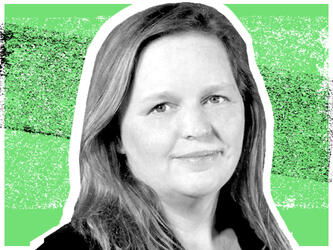Power play

If you’ve ever felt frustrated by your romantic partner – perhaps they’re messier than you, or don’t do their fair share of the cooking, driving or washing up – then you may also have felt a small urge to act out against them as a result. You may even have done so without realising it, according to science. New research has revealed an unusual way in which people respond to frustration with their partner: through their choice of brands.
The study, ‘Oppositional brand choice: Using brands to respond to relationship frustration’, published in the Journal of Consumer Psychology, found that individuals who are frustrated with their partner – or have been primed to feel that way – may, when given a choice between two rival brands, choose one for themselves that is in opposition to the one they believe their partner prefers. This is particularly true if the frustrated person is ‘low in relationship power’.
Power, within the realms of close relationships, refers to the ability to control relationship outcomes, meaning those with higher power should be more able to achieve their goals and get their preferred outcomes within a relationship.
The researchers, Danielle Brick, of the University of New Hampshire, and Gavan Fitzsimons, of Duke University, explained that, while frustration within the context of close relationships might lead people to want to act out against their partner, they may not want to actually do so, as they don’t want to hurt them or their relationship.
TESTING the relationship
According to previous research, higher power individuals are more likely to express their own attitudes and opinions, and in the context of this study, they would be more likely to air their frustrations with their partner directly. Lower-power partners are less likely to have control over the outcomes within their relationship, and are less likely to express their emotions and opinions directly.
To test this thoroughly, the researchers carried out three separate studies. In the first, they asked participants to indicate which brands, between pairs of rival brands across different categories – such as Microsoft or Apple and Nike or Adidas – their partner preferred. They were then asked to think and write about one of three topics: a time when their partner had done something that left them frustrated; their partner’s physical appearance (a control condition); or a time when their partner did or said something that made them happy.
Participants were then asked to imagine they were making a choice between the same pairs of brands that they had previously been shown, on the basis of which brand they preferred – rather than which one their partner preferred.
Lastly, the participants were asked to complete relationship measures, including a scale that indicated the amount of power they held in their relationship.
Analysis of the results revealed a significant interaction between emotion condition (whether the individual had been primed to feel frustrated, neutral or happy with their partner) and relationship power when it came to oppositional brand choice. “In other words, when individuals are lower in relationship power and feeling frustrated with their partner, they make significantly more oppositional brand choices than higher-power partners,” the researchers said.
Brick is keen to distinguish an oppositional brand choice from a ‘spiteful’ brand choice. “In the oppositional brand choice, the individual making the decision is consuming/using the brand; in the spiteful brand choice, the individual would be making a brand choice for the partner to consume/use,” she says.
This behaviour would also extend to other kinds of relationships, such as close friendships, as long as there is some degree of interdependence, says Brick. “It could also occur in close relationships in which there is a chronic power imbalance, such as parent-child relationships or, potentially, even boss-employee relationships.”
A second study investigated whether individuals shift their underlying brand preferences when they make these oppositional brand choices, or make an active choice against their partner. Put more simply, are participants feeling negatively towards their partner’s preferred brand as a side effect of their frustration, or are they choosing an opposing brand as an active way of responding to it?
The second study more or less recreated the first one, but, instead of a ‘happy’ condition, a ‘sad’ condition was included.
A task was also added in which participants indicated how much they liked each of their partner’s brands both before and after carrying out any tasks. In the post-task rating, they also indicated their feelings towards filler brands.
Results showed there was a significant positive effect of power on partner brand attitudes within the sad condition, but no effect of power on partner brand attitudes within the frustrated condition.
This means that those individuals who had less relationship power, and had been primed to feel sad, had more negative attitudes towards their partner’s brand, while those who felt frustrated – but who also had low relationship power – did not.
taking close relationships into account
The researchers interpreted this as support for the idea that there are different effects on brand attitudes and choice depending on the specific negative emotion. In this case, those who felt sad actively changed their attitude towards their partner’s preferred brand, while those who felt frustrated chose an opposing brand to their partner’s preference, but didn’t change their attitude towards it.
A final study used non-conscious priming (flashing the participant’s partner’s name and emotion – or neutral – words) to activate a significant emotion, in addition to the tasks that were carried out in the first study. This was done to investigate whether subliminally activating close relationships can also influence behaviour.
Results echoed those of the initial study, in that individuals who were non-consciously made to feel frustrated with their partner made more oppositional brand choices as the level of power in the relationship decreased.
Brick believes that the research underlines the importance of taking close relationships into account when looking at consumer behaviour.
“Close relationships are one of the strongest and most influential types of social situations, which suggests that market researchers should take notice of close relationships – for example, marital/relationship status – when evaluating brand preferences,” she says.
“One might be able to think back over the course of various relationships and note how changes shifted over the course of the relationship. Maybe when you enter into a new relationship you are a Colgate person, but over time you find yourself becoming a Crest person. But maybe one day that relationship ends. “Do you go back to Colgate or stick with Crest?”

We hope you enjoyed this article.
Research Live is published by MRS.
The Market Research Society (MRS) exists to promote and protect the research sector, showcasing how research delivers impact for businesses and government.
Members of MRS enjoy many benefits including tailoured policy guidance, discounts on training and conferences, and access to member-only content.
For example, there's an archive of winning case studies from over a decade of MRS Awards.
Find out more about the benefits of joining MRS here.














0 Comments